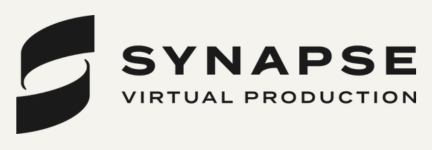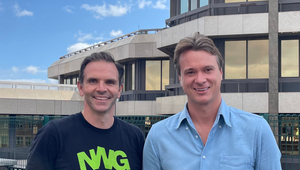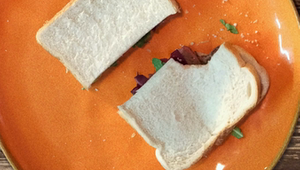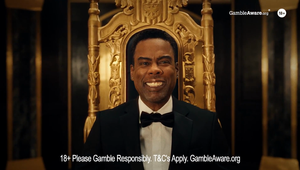
Navigating Social Media Obsessions: How to Build Community Without Feeding the Cult

When was the last time you had a good old scroll, with no particular intention other than the irresistible draw of the glowing rectangle? As Holly Butteriss, senior content manager at UK agency RCP admits, she’s always at it. “Think about the moments you reach for your phone: on the commute, between meetings, waiting in line, sitting on the toilet. I dread to think of the number of times I pick up my phone every day and absentmindedly open up TikTok. We’re not even really searching for anything specific, it’s just scrolling, scrolling, scrolling to break up the day.”
But from the platforms’ point of view, we’re not just happy customers finding ways to while away our hours. “The way these platforms are built means you’re not just killing time, you’re being fed a neverending stream of content, faster than your brain can properly process,” says Holly. “Most of it is the same stuff you saw yesterday, the same ideas regurgitated by a different, but very similar looking influencer. The same trends, the same audios. The same conversations.”
Then something clicks. “One post that stops the mechanical motion of your thumb and suddenly you’re locked in,” she says. Our attention spans are short, and getting tragically shorter, according to some studies, so when something cuts through the noise, it really sticks. That moment of connection is where the magic happens, for Holly: “An opportunity to slide down the algorithmic rabbit hole. You click the profile. You read the comments. You watch five more videos. You’ve gone from idle scrolling to full-on obsession, and it only took seconds.”
This is the best feeling social media can give us. “There’s a joy in that discovery, of a group of strangers all invested in the same, niche moment. It quickly creates an echo chamber and that’s where the first spark of interest can lead to obsession.”
Here’s the social content expert’s thesis:The brands and creators who can tap into that, can create that, are the ones who win on social.
Influence to Define
When so much of our time is spent online, it’s almost inevitable that it will start to influence how we define ourselves. Algorithms shape our sense of normal, the boom in ‘-core’ culture (cottagecore, blokecore, balletcore…), where everything and anything can be an aesthetic, and can be packaged up into a set of styles, routines and behaviours is, Holly argues, a clear indication of how powerful social media is in how we define ourselves. “Our definitions of what is good, healthy and worth spending our money on is warped by the influencers we follow and the brand partnerships they peddle, promising that this product they’re using really did change their life, and it’ll change yours too,” she says.
That can be comforting, in a way. You’re surrounded by people who seem to share your interests, your values, your pace of life. You start to see yourself reflected back, and that can feel like validation. But she warns of letting the algorithm tell you who you are. “The more the algorithm gets to know you, the more it reinforces what it thinks you want and filters out anything that doesn’t match up,” she says. “You can quickly find yourself in an echo chamber, one that can become boring at best, and dangerous at worst.
“Hyper consumerism is a direct symptom of this desire to define ourselves in ways that are recognisable to people we follow online. As soon as you start identifying as a ‘trinket girl’ it seems inevitable that you must then buy a Labubu. But when the content you consume never seems to change, how can anyone expect to grow?”
There’s a flip side to this too. The de-influencing conversations that have happened over the last year speak to this desire to find originality again, with what Holly points to as “a movement to reject these prepackaged identities, and instead do the work to cultivate personal style and taste.”
The #BookTok community can often feel saturated by the same titles circulated over and over again. But there’s an increasing shift towards videos like ‘five books you’ve probably never heard of before’ or ‘books I’ve never seen on BookTok’, Holly notes. “These creators are actively turning away from the trending titles we’re familiar with and searching for something that feels new. Ultimately, social media is multifaceted with many things being true at once and community can be found in many places.”
Online Linguistics
It’s a well-known trope that gen z thinks millennials are cringey (or, sorry, cheugy). It’s a symptom of how quickly online language changes. “Online communities thrive on hyper-specific slang, inside jokes, and niche references,” says Holly. “The deeper you are in a subculture, the more fluent you become, and that fluency becomes a kind of social currency. It’s like being in an exclusive club where the memes, the soundbites, even the way you type, signals who’s in and who’s out.”
What’s wild is how fast these languages develop. A single viral video can spawn a new lexicon, (think demure, mindful, brat), or even entire aesthetics that shape how a community talks and thinks about itself. “The lore only gets more niche, more self-referential, and, honestly, more fun. That specificity is where creativity lives,” says the social expert. “Humour becomes a way to connect and I’m forever surprised by how funny and creative people can be.”
And you don’t need to feel excluded based on geography to get the joke. You might be the only person in your small town who’s obsessed with a certain fandom, or who understands a layered meme about some niche internet drama, but TikTok will serve you hundreds of people who do get it. ”That’s how micro communities form, around shared references, humour, and the kind of knowing nod that says you’re one of us,” explains Holly.
But when brands try to authentically show up within online communities without being the literal embodiment of the ‘how do you do, fellow kids?’ meme, it gets challenging. “The best way to do it is to have people on the team who are both brand advocates and literal members of the community you want to tap into, and then trust them to know what’s best,” advises Holly. “If they already speak the language, let them translate for you. If they’re already participating in the culture, let them get creative with brand assets.”
And if you don’t have someone in-house who can translate for you, then you should slow down. “Observe and listen to the people who are participants in the space,” she says. “You’ll be surprised by what you learn and the nuances you pick up. Approach strategically and with open mindedness, and be prepared to change tack as the community evolves around you. “
By way of a brand example, she points to Scrub Daddy, the “somewhat terrifying, grinning accomplice in every #CleanTok video,” she laughs. “Whether it’s a paid ad or not, Scrub Daddy will show up in the videos because it has embedded itself so thoroughly into the corner of the internet where they can best show up authentically.”
That’s no coincidence, as effortless as it might look. Scrub Daddy started with a good product, strategic partnerships with influencers, and its own brand of unhinged social media marketing. “Taking a leaf out of Duolingo’s book and personifying Scrub Daddy with a mascot certainly helps,” notes Holly. “But really, the brands that win in these subcultures are the ones that don’t take themselves too seriously, and who let go of the idea of tightly controlled brand messaging. They understand the humour and emotional tone of the community, and show up consistently, not just to sell, but to belong.”
On the flip side, there is a risk of becoming part of the noise or contributing to the burnout and fatigue users often experience from overexposure to social media. And RCP's social expert has seen it, often when brands treat platforms like TikTok or Instagram as billboards, rather than ecosystems. “You can’t just throw yourself into a subculture, chuck in a few buzzwords, and expect to be embraced with open arms. It’s performative and our bullshit detectors will go haywire at the first sign of inauthenticity,” she says.
The brands that avoid becoming part of the noise are the ones that understand restraint. They don’t feel the need to comment on every trend or jump on every meme. They show up with purpose. They earn attention instead of demanding it. Sometimes that means knowing when not to post, or when to centre the audience instead of the product.
“Burnout also happens when everything feels optimised to death,” adds Holly. “If every post is super polished, overly branded, or obviously trend chasing, it strips away the human element. It’s brands that behave like humans that cut through, that are leaving room for messiness, humour and vulnerability. That’s what makes a brand feel real to audiences, not just there for the sake of it.”
New Engagement
As messy and human as this all is, businesses still need to measure their marketing’s effectiveness, and the layers of nuance involved in good social content make that a challenge. “Sometimes it feels nigh-on impossible to do this,” admits Holly. “The way we engage with content is increasingly different to how we engaged with it in the past, and it’s something a lot of brands haven’t quite clocked on to yet. A lack of likes and comments no longer necessarily signals a flop. Not if you’re racking up shares and longer watch times on the same asset. You’ve probably heard the term ‘dark social’ flying around recently, and what it boils down to is audiences taking a lot of their engagement offline, or doing it quietly. Watching the same video repeatedly, sending it to friends, chatting about it in DMs. Not everything is easily measurable, so the old systems of being able to differentiate between the algorithmic loop and genuine engagement becomes tricky.
“When we enjoy something it seems we prefer to pass it on by word of mouth. How many times a day do you say to a friend or colleague ‘I saw this TikTok and…’ that’s what engagement looks like now, and it’s not visible on the post itself. The challenge is that we’re still being asked to measure these new and evolving behaviours with the same outdated KPIs, which makes measuring success harder than ever.”
Turn your gaze to the comment section and you’ll find yourself witness to the slippery slope from healthy, positive engagement to community in-fighting and toxicity. Holly gets it. “When you care passionately about something you naturally want to discuss it, but toss in some anonymity armour, you get yourself the potential for a very toxic community.”
Having recently read Naomi Klein’s ‘Doppleganger’, Holly considers her analysis of the pipeline from health and fitness influencer to far-right ideology. “It puts into words something I have noticed in my own work and engagement with social media over the years; how easily spaces that are initially framed around empowerment, self-improvement, or personal liberation can slide into something much darker.
“What starts as a conversation about taking control of your health and finding balance, can morph, almost without you noticing, into a worldview steeped in conspiracy and moral panic. The tone shifts from inclusive to insular, all nuance disappears. Instead of encouraging discussion or growth, these spaces begin to enforce a clear line between those who get it and those who, in their view, don’t. Sounds familiar right?”
Holly and her social colleagues at RCP speak a lot about cult followings, but Klein’s work perfectly articulates how community can be corrupted. “It’s a warning to us all to take these digital spaces seriously and to consider what we stand to lose, as well as gain, from entering these environments as brands with big voices and power. Despite what some people would have you think, these communities are nuanced and it takes time and genuine understanding to navigate them successfully,” she reflects.
This is treacherous territory. So how can brands safely navigate it all? Holly takes it seriously. “Obsession is an unavoidable part of existing in these digital spaces,” she says. “Our hyperfixations with specific book series, cult beauty products and collectibles spring up from seemingly nowhere and create empires of dedicated and loyal fans overnight. For brands it’s tempting to jump into the fray, or to seek ways of creating that cult mentality for yourself. But obsession is driven by more than just a desire to spend our money. It’s emotional, personal and in many ways about the desire to belong. Brands who navigate this space successfully approach it less like an opportunity to boost sales, and more like a conversation. They understand the emotional stakes and are cognizant of the fact that what might seem like a silly social trend has the potential to cross the line into exploitation, when treated like a means to monetise.
“There is no perfect answer to how brands can navigate obsession in social spaces,” she concludes. “My advice is to ask whether you are entering their space because you believe you can uplift and empower them in some way, or do you just see an opportunity to hit targets? Participating in online communities and culture, whoever you are, means being aware of your role, your power and your potential impact. The internet would be a much better place if we all approached it with a little more empathy.”















